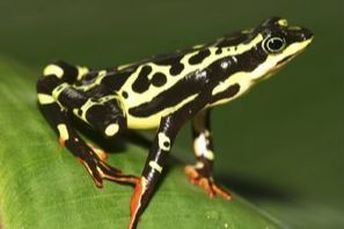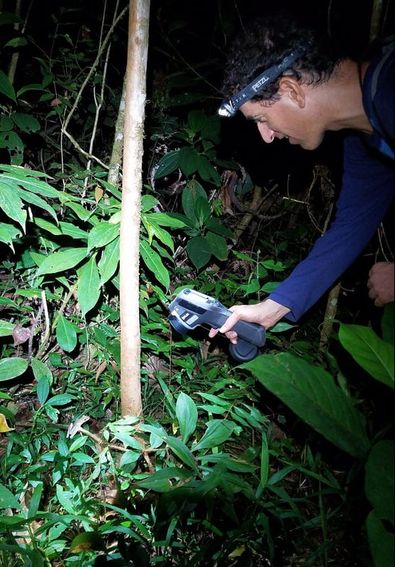


 Last July we embarked on a search for Atelopus loettersi, shown in the picture here taken from the description by I. De la Riva and colleagues. The type locality is near Quincemil, in a trib of the Nusiniscato river. Sadly this river, similarly to many other rivers in the upper Madre de Dios, Araza and Inambari watersheds, is the target of indiscriminate gold mining, which is affecting river turbidity and sedimentation, and likely introducing mercury into the riverine ecosystems.  The original description already warned us the task would not be easy, since a single adult had been found at this locality. However, some juveniles had also been found during a previous visit, so we were hopeful we could again confirm presence of this species. Harlequin toads have declined throughout their geographic range from Costa Rica to Bolivia, yet lowland and submontane species such as A. loettersi (the type locality is at 480 m a.s.l.) have generally fared better than mid-and high-elevation species..  We spent two nights at the stream where the species was first discovered, and at an adjacent stream which also looked like great harlequin toad habitat. Both streams had rich macroinvertebrate communities, and although one had water withdrawals for a nearby miner's camp, they generally appeared to be in good shape. We unfortunately did not see any sleeping A. loettersi at night. We again went back during the day and similarly failed to spot or hear any harlequin toad, or to find any of their tadpoles in side pools of the creek. During the two nights, the concomitant full moon and mostly clear skies certainly did not help with making the night surveys very successful. Despite these shortcomings, we were able to swab the skin of ~20 frogs of other species, which will provide information on presence of cythrid fungus. We also helped an Engystomops freibergi have one of her best nights, after inadvertently destroying a short segment of a termite tunnel.
0 Comments
Leave a Reply. |
Archives
June 2024
CATENAZZI LABNews from the lab Categories |